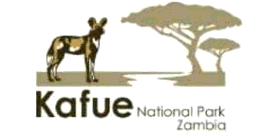 Zambia’s Bold Wildlife Translocation Boosts Kafue National Park’s Ecotourism and Biodiversity
Zambia’s Bold Wildlife Translocation Boosts Kafue National Park’s Ecotourism and Biodiversity
The Zambian Ministry of Tourism, through its Department of National Parks & Wildlife, has embarked on a groundbreaking conservation initiative that promises to reshape the wildlife landscape and tourism prospects of the country’s premier parks. In collaboration with the Barotse Royal Establishment and African Parks Network, this ambitious project involves relocating a staggering 1,650 wildebeest and 300 zebras from Liuwa Plain National Park to the expansive Kafue National Park.
Spanning an impressive 22,400 square kilometers in central-western Zambia, Kafue National Park is a jewel within the Kavango-Zambezi Transfrontier Conservation Area—the largest transboundary conservation zone worldwide. Historically renowned for its vast herds and rich biodiversity, Kafue has faced significant wildlife declines over recent decades due to poaching and habitat pressures. This translocation effort marks a pivotal step in a broader rewilding strategy, following the successful reintroduction of the endangered Kafue lechwe earlier in June 2024.
By introducing these large herbivores from Liuwa Plain, conservationists aim to restore the park’s natural grazing dynamics, which are essential for maintaining healthy grasslands and supporting predator species such as lions and hyenas. Wildebeest and zebras play complementary roles in grazing—zebras prefer taller, tougher grasses while wildebeest favor shorter, softer varieties—ensuring balanced vegetation management that benefits the entire ecosystem. Their presence also revitalizes predator-prey relationships, enhancing the ecological integrity of Kafue’s diverse habitats.
Liuwa Plain National Park, covering 336,000 hectares of the Western Zambezian Grasslands, is itself a conservation success story. Managed by African Parks for over two decades, it hosts Africa’s second-largest wildebeest migration and boasts more than 300 bird species. The park’s thriving wildlife populations are a testament to sustained protection efforts and strong community partnerships, making it a vital source for replenishing wildlife in other regions of Zambia.
In a reciprocal conservation gesture, 50 Lichtenstein’s hartebeest—absent from Liuwa Plain for over 30 years—will be reintroduced from the Mulobezi Game Management Area. This move aims to restore a balanced herbivore community within Liuwa, further enhancing its ecological health and appeal to nature enthusiasts. The hartebeest, a large antelope native to southeastern-central Africa, plays a crucial role in maintaining the grassland ecosystem and adds to the park’s growing tourism potential.
This large-scale translocation not only strengthens Zambia’s biodiversity but also signals exciting opportunities for conservation-based tourism. Kafue National Park, already a favored destination for safari-goers, stands to benefit from increased wildlife sightings and richer ecosystems, which are key drivers for attracting international visitors. The project aligns with Zambia’s broader vision of sustainable tourism development, where wildlife conservation and community engagement go hand in hand to create lasting economic and environmental benefits.
For the African travel sector, this initiative highlights the evolving landscape of wildlife tourism in Zambia. Enhanced biodiversity and restored ecosystems translate into more compelling safari experiences, encouraging longer stays and repeat visits. Improved infrastructure and conservation success stories like this one are vital in positioning Zambia as a top-tier destination within the competitive Southern African tourism market.
As Zambia continues to invest in such transformative projects, the ripple effects will be felt across the region’s tourism value chain—from airlines and lodges to local guides and community enterprises. The restoration of iconic species and habitats not only enriches the natural heritage but also strengthens the continent’s appeal to discerning travelers seeking authentic and sustainable wildlife encounters.
